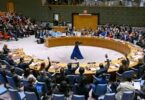The circular debt has reached to alarming proportion of Rs. 922 billion till November last year and may further go up to the end of current fiscal year. It is almost double of the amount of circular debt accumulated during the five years rule of previous PPP government. The carry over liability of Rs. 480 billion on this account was paid by the incumbent government in 2013 to persuade the Independent Power Producers (IPPs) to resume power generation activities which they had stopped because of non-payment from the previous government. To hoodwink the public opinion, the ministry of finance has put the figure of circular debt at Rs. 472. 678 billion, conveniently glossing over the amount of Rs. 450 billion separately parked with Power Holding Private Limited (PHPL).
The major factor of massive circular debt accumulation within few years is the adhoc policy of very expensive thermal power generation mainly with diesel and furnace oil-fired by private sector power plants. In the second government of Pakistan People Party, open-ended agreements were made with IPPs, completely compromising the national interest. The clauses of these agreements were loaded in favor of the private power producing companies and against the financial interests of the government and poor people of Pakistan. The claims of production cost are blindly accepted by the government without going for audit to verify their hefty claims. In September, 2017, the World Bank’s International Center for Investment Disputes (ICSID) awarded around $ 800 million compensation to Karkey Karandiniz Elektrik Uretim of Turkey in a Rental Power case. Weeks later in November 2017, the London Court of International Arbitration awarded to pay Rs. 14 billion ( $ 135 million) including mark-up to a group of nine local power producers for breaching contractual obligations. Paying $ 900 million for debt riddled country like Pakistan is a big financial jolt. Naturally, this burden was passed on to electricity consumers. Chairman PPP Bilawal Bhutto Zardari had rightly said, “Democracy is the best revenge.”The revenge is taken from the poor people who pay ‘Debt Obligation Surcharge’ in the monthly electricity bills.
The present PML-N government converted the mega connectivity project China-Pakistan Economic Corridor (CPEC) largely into an expensive thermal power generation project by including 13 coal-based power plants entirely owned by Chinese power producing companies. A revolving fund has to be created in commercial banks to make advance payments for the purchase of expensive thermal power. Had the national interest been held supreme the priority would have been for hydropower and wind power plants generating very cheap electricity. The governments of both the mainstream political parties have been least bothered about the whirlpool of circular debt bringing miseries for the electricity consumers and adversely impacting the economy.
Presently the power mix comprises 70 percent highly expensive thermal and 30 percent cheap hydropower. The ratio needs reversal by adding hydropower which can be achieved by implementing small, medium and big hydro power projects. KP government had submitted small hydropower projects with a total generation capacity of 2100 megawatts in 2012 which need implementation on fast track basis. The remaining work on Nelum-Jhelam and Tarbela extension power projects is expedited. Consensus has to be achieved for the construction of Kalabagh Dam and financers for the construction of Diya Mir Basha Dam have to be searched out. The donaors who have agree to finance Monda and Kurram Tangi Dams may be persuaded to undertake the construction work as per schedule. The terms of agreements made with IPPs need re-negation as per the contractual obligation the government has to make payments to the local power produces whether it purchases power from them or not. Moreover, diesel and furnace oil fired power plants should be converted to gas to bring down the production cost.






